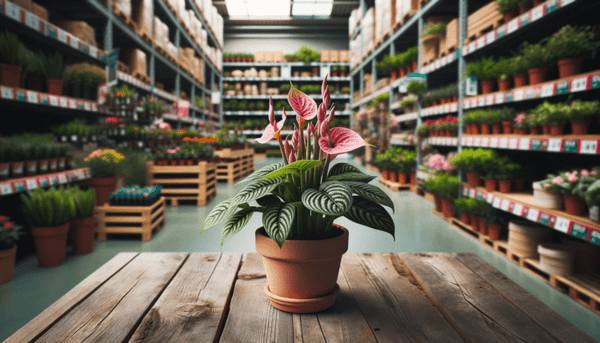
flamingo plant
Information for the customer:
- Plant Position: indoor shade
- Soil Type: well draining , porous
- Common Diseases: root rot , blight
- Common Pests: scale , aphids , mealybugs , whitefly , mites , fungus gnats
- Watering Needs: moderate: anytime between weekly to fortnightly
- Shade Requirements: yes
- Lighting Requirements: average light: 50% - 75% of daily sun
- Pet Child Friendly: no
- Air Purifying: yes
Potting Sizes and Info:
- Suitable For Hanging: no
Additional Facts and Info:
- Scientific Name: anthurium
Extensive Info on the flamingo plant:
How do you take care of an Anthurium?
Location
Bright, indirect light is perfect for the Anthurium. The more sunlight it receives, the more blooms it will produce, but never expose it to direct sun as it can burn its foliage. The Anthurium prefers a spot next to a window on the west or east. If an Anthurium gets too much sunlight, the plant will get yellow leaves. If the Anthurium gets too little light, the plant will stop growing flowers.
Watering
A consistent watering schedule will help your Anthurium bloom. Allow the top (2 to 6 cm) of the soil dry out, before watering again. Make sure that when water the water runs out of the drainage holes. Avoid overwatering the plant as it can lead to root rot, but don't let it get too dry either; therefore, check the soil every few days. In the growing seasons from March to September, water the Anthurium once or twice a week. Make sure the soil is dry between each watering. In the winter, you can water it once every two weeks, again confirming that the soil is dry before each watering.
Plant nutrition
To encourage more blooms, you can use a plant nutrition. Feeding the Anthurium once a month during the summer and spring with a balanced fertilizer is enough. It is best to use a fertilizer to half the recommended strength. In winter, indoor plants appreciate being left alone to rest.
Repotting
We recommend repotting the Anthurium once every 2 years, and when the pot becomes too small of course. Repotting the Anthurium gives the plant new nutrients and more room for root growth. The new airier soil is also very good for watering. The best period to repot is spring.
Air-purifying
Anthuriums are listed among the best indoor plants that purify the surrounding air, as stated by the NASA Clean-Air study. Their large and dark foliage absorbs ammonia, formaldehyde, toluene, and xylene from the air and releases oxygen in return.
Is an Anthurium toxic?
Yes, Anthuriums are toxic. Their toxicity comes into action when either pets or humans ingest them. Not only do they cause mouth and skin irritation, but they can also lead to the development of blisters in your mouth. They also prompt hoarse voices and stomach pain with possible vomiting.
Diseases and peculiarities
The Anthurium is not susceptible to pests and diseases. Mourning flies and root rot can always appear, although this is mostly due to unproper care.
Frequently asked questions about the Anthurium
How can I make an Anthurium flower again?
Anthuriums can flower all year round. In general, the Anthurium blooms for 3 months, and then stops flowering for a few months. Tips to make the Anthurium bloom again:
In early spring, give the Anthurium 6 weeks to 8 weeks no food and less water
Place the plant in a lighter location Water the plant max. 1 per week Why does my Anthurium get yellow leaves? If the Anthurium gets yellow leaf edges and leaf tips, this is because of the watering. The yellow leaf tips can be caused by too little or too much water. If the Anthurium leaves get a completely yellow glow, this is caused by sunburn. In this case, move the plant to a location with less sunlight.
Can an Anthurium grow in water?
Yes, you can let the Anthurium grow in water. Before you let the Anthurium grow in water it is important to clean the roots. As soon as the Anthurium grows in water it is important to change the water and glassware once a week. This is also called: Hydroponics.
Can you take cuttings from an Anthurium?
Yes, you certainly can. Check out our tips on how to propagate the Anthurium.